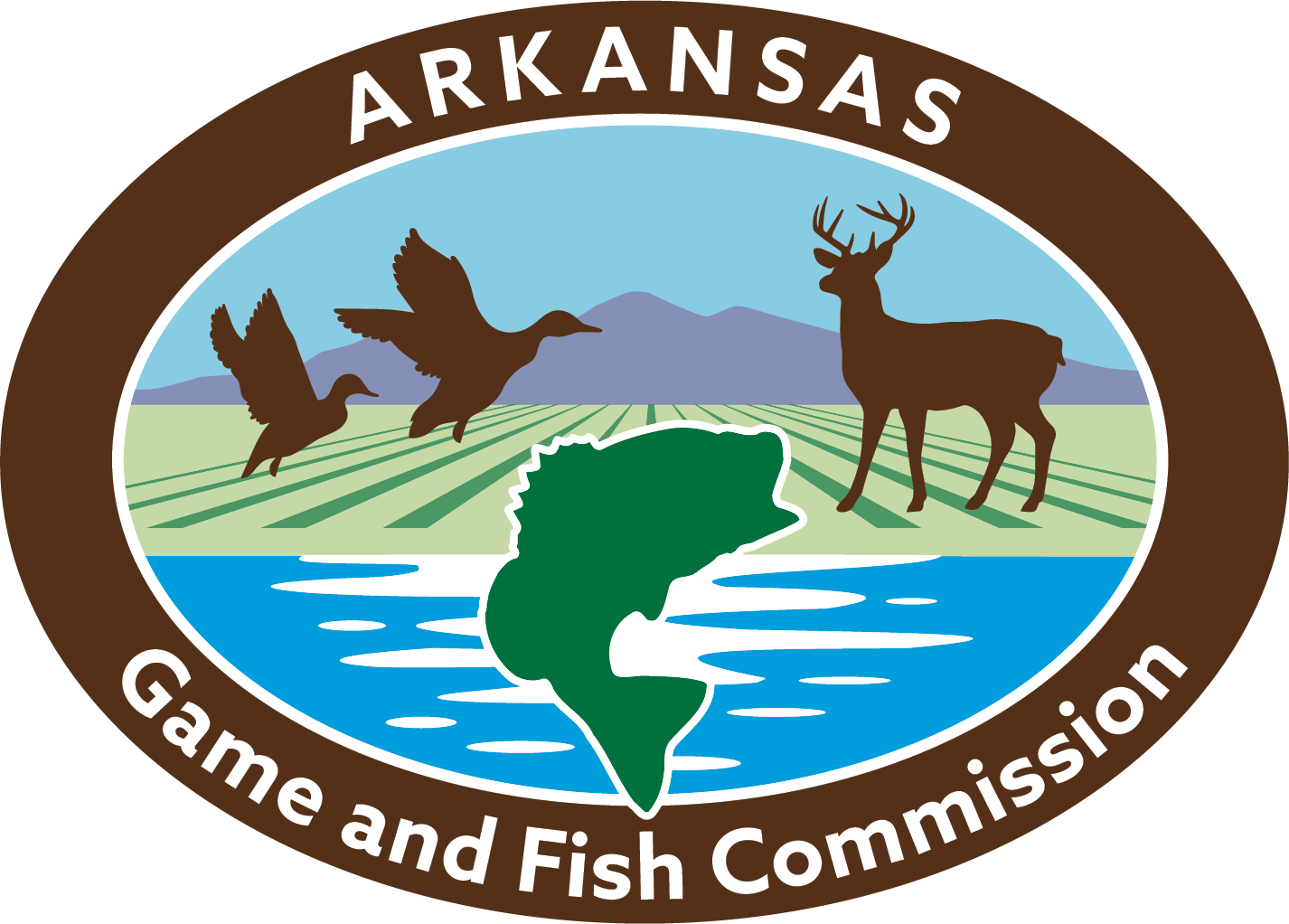It is unlawful to possess native wildlife as pets except as follows:
- Native wildlife captured by hand (hand-held, manually-operated aids such as tongs and snake hooks may be utilized to capture these species) from the wild in Arkansas may be possessed as personal pets in compliance with the following restrictions:
- No more than 6 per household of any combination of the following animals may be possessed as pets:
- Hand-captured opossum, rabbit, raccoon and squirrel; and
- Deer that were captured by hand prior to July 1, 2012, may be retained until their death.
- Bobcat, coyote, gray fox, and red fox that were captured by hand prior to July 1, 2022, may be retained until their death.
- Hand-captured native non-game wildlife other than birds, bats, alligator snapping turtles, ornate box turtles, hellbenders, Ouachita streambed salamanders, collared lizards, troglodytic species (cave dwellers), or those animals defined as endangered species.
- It is unlawful for any person to remove such wildlife or their offspring from Arkansas except under the terms of a permit that may be issued by the Chief of Wildlife Management to persons who are moving to another state and have presented proof from that state that it is legal to import the wildlife.
- The sale or transfer of ownership of such wildlife or their offspring is prohibited except as provided in (A)(7) of this regulation.
- All wildlife possessed in captivity shall be maintained in enclosures, pens, or cages that are sufficiently strong to prevent escape of the wildlife and that will protect the wildlife from injury.
- All adult deer kept in compliance with (A) of this regulation shall be confined within an enclosure that complies with the following requirements:
- Enclosures shall have a perimeter fence that is not less than 8 feet in height and shall be constructed so as to prohibit the escape of confined cervids and the ingress of native cervids.
- The area of the enclosure shall not be less than 200 square feet for the first cervid and shall be increased in size 150 square feet for each additional cervid.
- Males and females of the same species must be kept in separate enclosures, or if kept in the same enclosure, the owner shall provide proof that all males within the enclosure have been neutered.
- Native wildlife, except white-tailed deer, kept as personal pets in compliance with this regulation may be transferred to a wildlife rehabilitator permitted by the Commission (Code 09.12) and released back into the wild in the county where they were captured provided such animals were not confined with commercially obtained, captive born wildlife of the same species.
- No more than 6 per household of any combination of the following animals may be possessed as pets:
- Captive born native wildlife: No more than 6 per household of any commercially obtained, captive born native wildlife not listed in Addendum R1.01 may be possessed as personal pets in compliance with the following restrictions:
- Commercially obtained, captive born wildlife pets and/or their offspring shall not be confined with the same species of wild born animals and/or their offspring.
- Animals shall either be acquired from either a Commission-permitted Wildlife Breeder/Dealer, acquired in accordance with Code 9.07 Exception I, or have been brought into the state in accordance with a Commission Wildlife Importation Permit. Owners shall maintain records of proof of legal ownership of such animals including licenses, bills of sale, bills of lading, receipts, invoices and copies of Wildlife Importation Permits or other satisfactory evidence.The date of acquisition, place of origin, and the name, address, and telephone number of the person from whom the wildlife was acquired shall be recorded. Owners shall provide these records to the Commission upon demand.
- Commercially obtained, captive born wildlife pets or their offspring shall only be sold in compliance with Code 09.07.
- Males and females of the same species must be kept in separate enclosures, or if kept in the same enclosure, the owner shall provide proof that all males within the enclosure have been neutered.
- Owners of commercially obtained or captive born white-tailed deer or elk that were acquired prior to June 30, 2005, and that are kept as personal pets may retain ownership of such animals provided they registered with the Wildlife Management Division by June 30, 2008, and are in compliance with all provisions of this regulation.
- Owners must immediately test all deer and elk that die in captivity for CWD and forward copies of test results to the Commission within seven days of receipt.
- All cervids kept in compliance with (B) of this regulation shall be confined within an enclosure that complies with the following requirements:
- Enclosures shall have a perimeter fence that is not less than 8feet in height and shall be constructed so as to prohibit the escape of confined cervids and the ingress of native cervids.
- The area of the enclosure shall not be less than 200 square feet for the first cervid and shall be increased in size 150 square feet for each additional cervid.
- All wildlife possessed in captivity shall be maintained in enclosures, pens, or cages that are sufficiently strong to prevent escape of the wildlife and that will protect the wildlife from injury. Birds must be kept in buildings or covered pens.
- It is unlawful for anyone to keep a native wildlife pet under inhumane or unhealthy conditions.
- Beginning July 1, 2021, medically significant venomous reptiles allowed under this Code must be kept in accordance with Addendum F1.08, Sections C and F.
EXCEPTIONS:
- Aquatic pets taken in compliance with Code 26.26.
- Holders of a Conservation Education Permit may possess more than 6 native wildlife hand captured from the wild in Arkansas in compliance with Code 09.18.
PENALTY: Class 1
